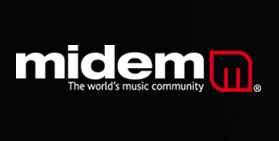
 The big news at MIDEM, Europe’s largest music industry conference, is that US-based labels are finished with licensing any new music sites that allow free streaming.
The big news at MIDEM, Europe’s largest music industry conference, is that US-based labels are finished with licensing any new music sites that allow free streaming.
Spotify Managing Director Paul Brown’s announcement that his company had accrued over 250,000 paid customers seemed to be emblematic of the streaming industry’s stance at the conference.
Indeed, throughout the conference, streaming services were trumpeting their efforts to promote their premium services over their ad-supported services. However, according to Warner Music Group, the revenue from the existing proportions of paid to ad-supported subscribers will not be enough.
Warner Music Group Senior Vice President of Digital Business Stephen Bryan said in a speech at MIDEM that, “We believe that the ad-supported services are most important in terms of aggregating an audience that can then be converted in to a premium service. We want to do more as a music company to make the paid services as attractive as they possibly can be relative to free options. The concern on the ad-supported side is obviously to make it engaging enough to have an opportunity to up-sell. We believe we should be doing more to ensure we’re not undermining the paid service by creating a service so compelling that they don’t see enough value in taking consumers to the paid service.”
While Bryan’s remarks were clearly aimed at Spotify and Pandora, there are a host of other companies that began as ad-supported sites. Mog.com launched a subscriber service in December, Britain’s We7 will launch one on February 1st, and Last.fm has gone to a subscription-only service in all of its markets except the US, UK and Germany.
So how will Spotify make it to the United States?
Bryan has an answer for that question, “We’re focused on taking service like Spotify and We7 in to discussions with ISPs and mobile carriers that have existing billing relationships with customers.” Fortunately for Spotify, this isn’t too far away from their non-UK billing model. All of Spotify’s mobile apps require subscriptions and are often bundled with mobile service. In fact, it seems that Spotify is concerned that the positive reputation its free service has gained in the US from word of mouth will impede the service’s ability to sell subscriptions.
Despite the refrain of “Subscribers, subscribers, subscribers” being shouted from the rooftops at the conference, Brown stressed that there was still a strong revenue stream coming from the ad-based model. With a 50 million-plus worldwide user base, Brown stated that Spotify is pulling in millions of dollars of ad revenue per month.
However, if we take Brown at his word, Spotify still has a long way to go to meet the labels’ targets. On a UK userbase of about 7 million, Spotify’s 250,000 subscribers mean the service has a 4% subscriber rate. Universal Music Group said last month that Spotify would need to reach 10% to 12% subscriber rates to pay the fees that the labels want.
Get the TNW newsletter
Get the most important tech news in your inbox each week.




